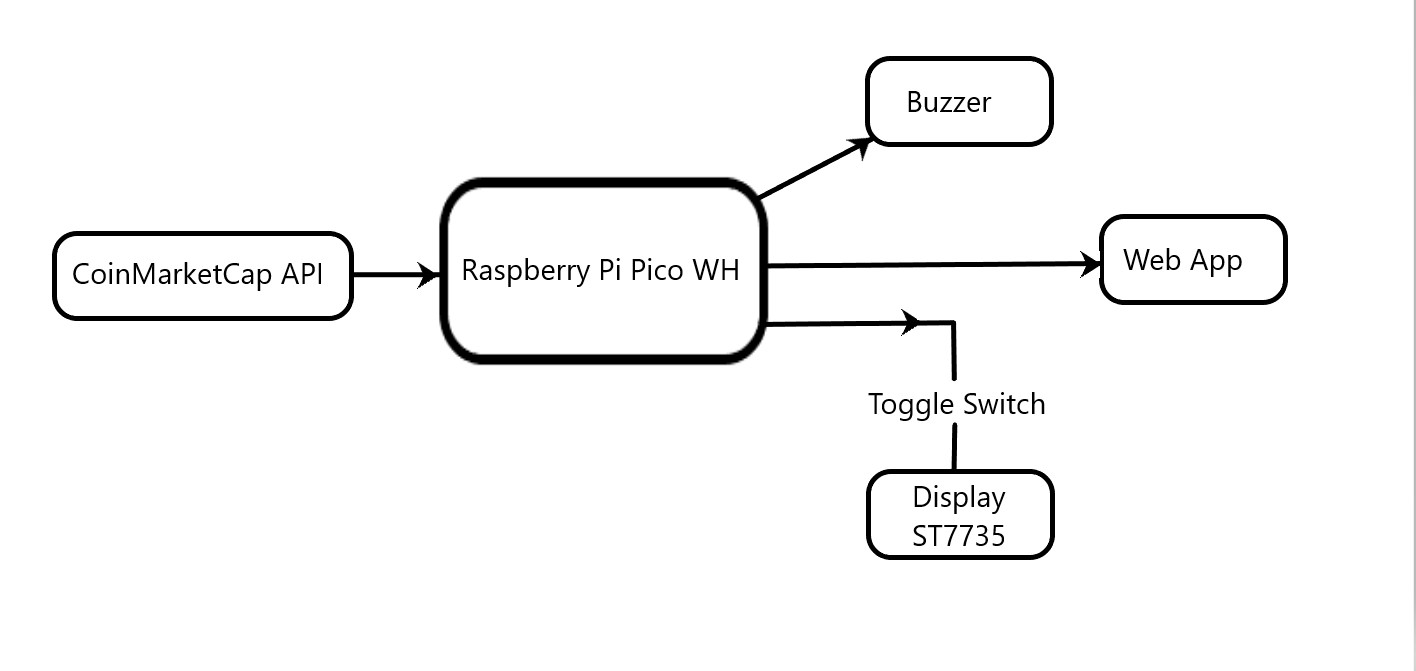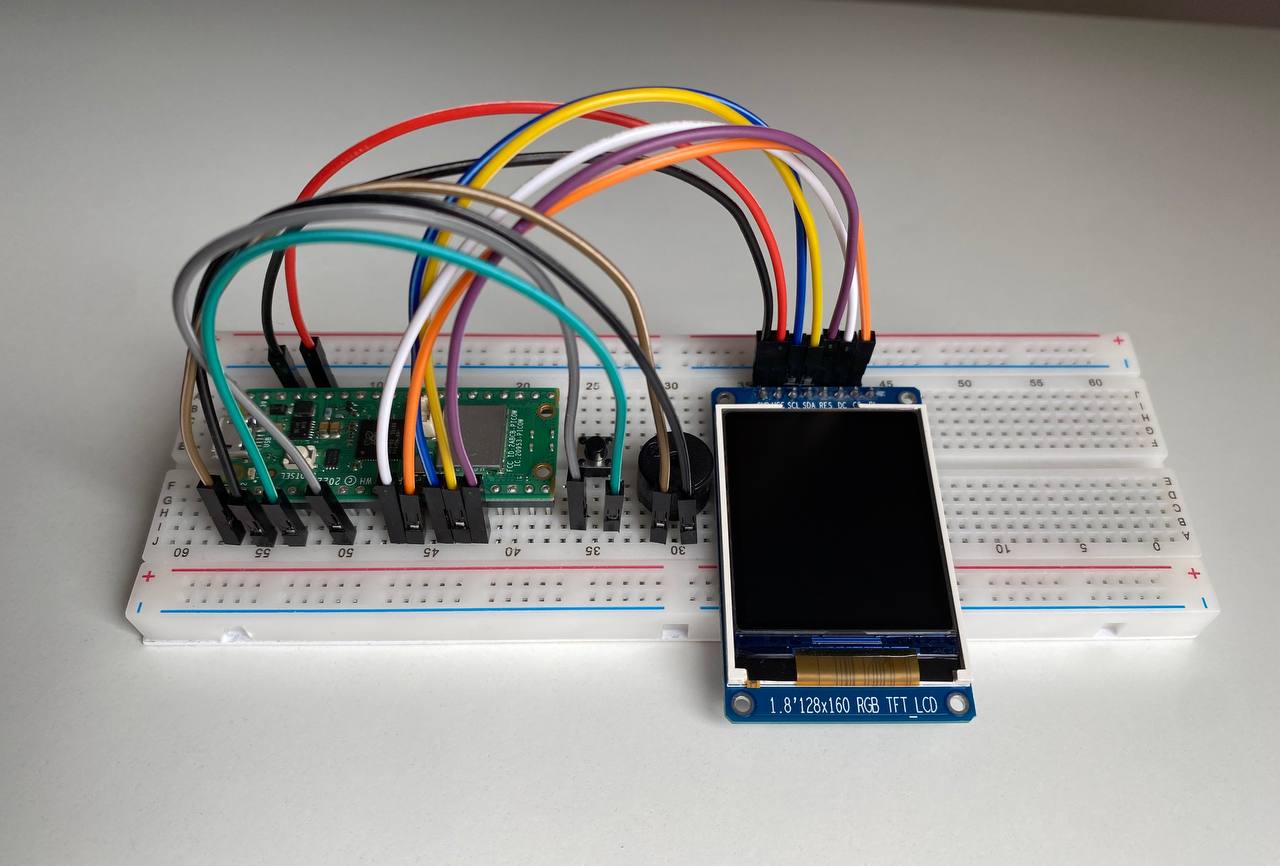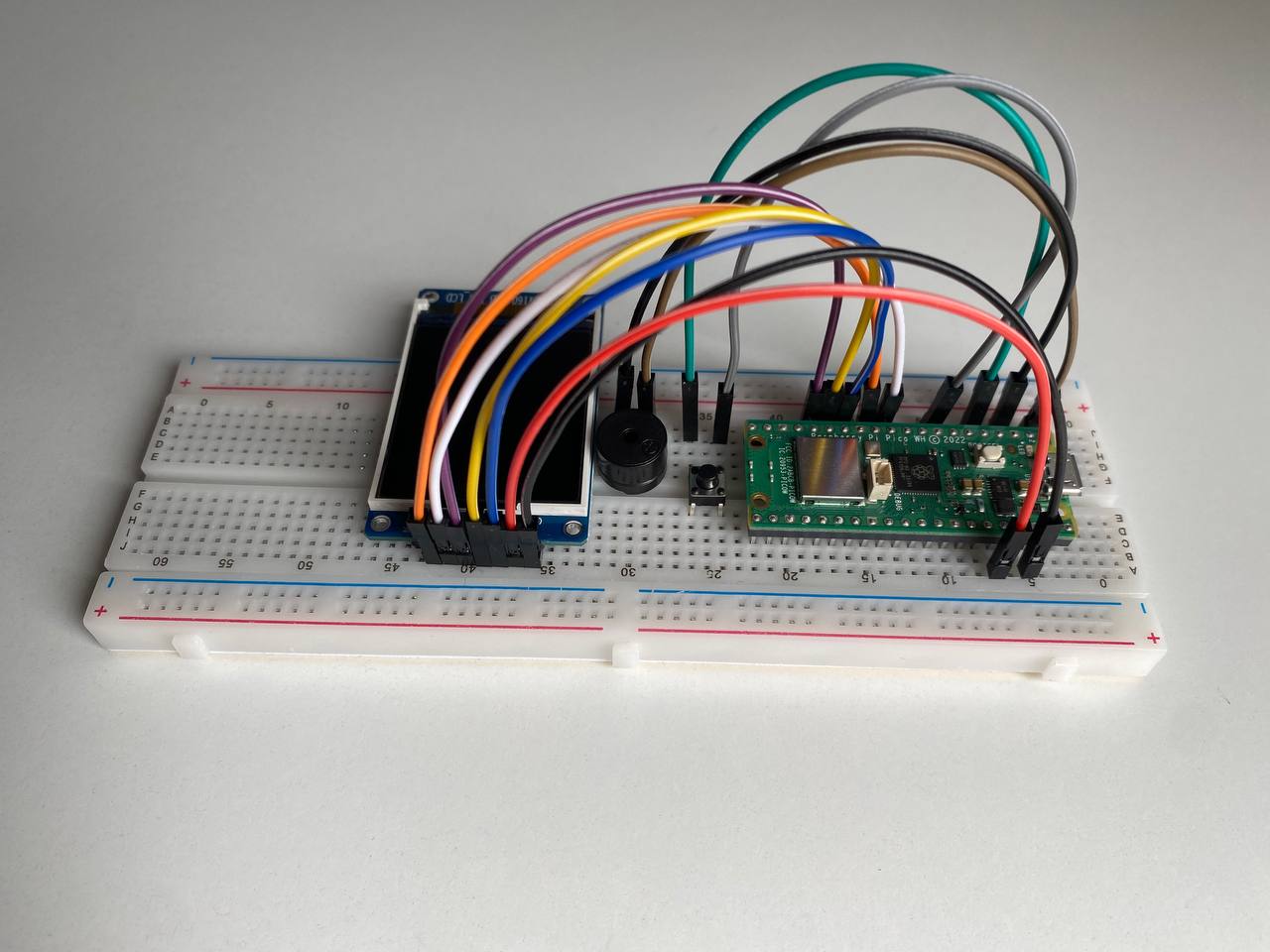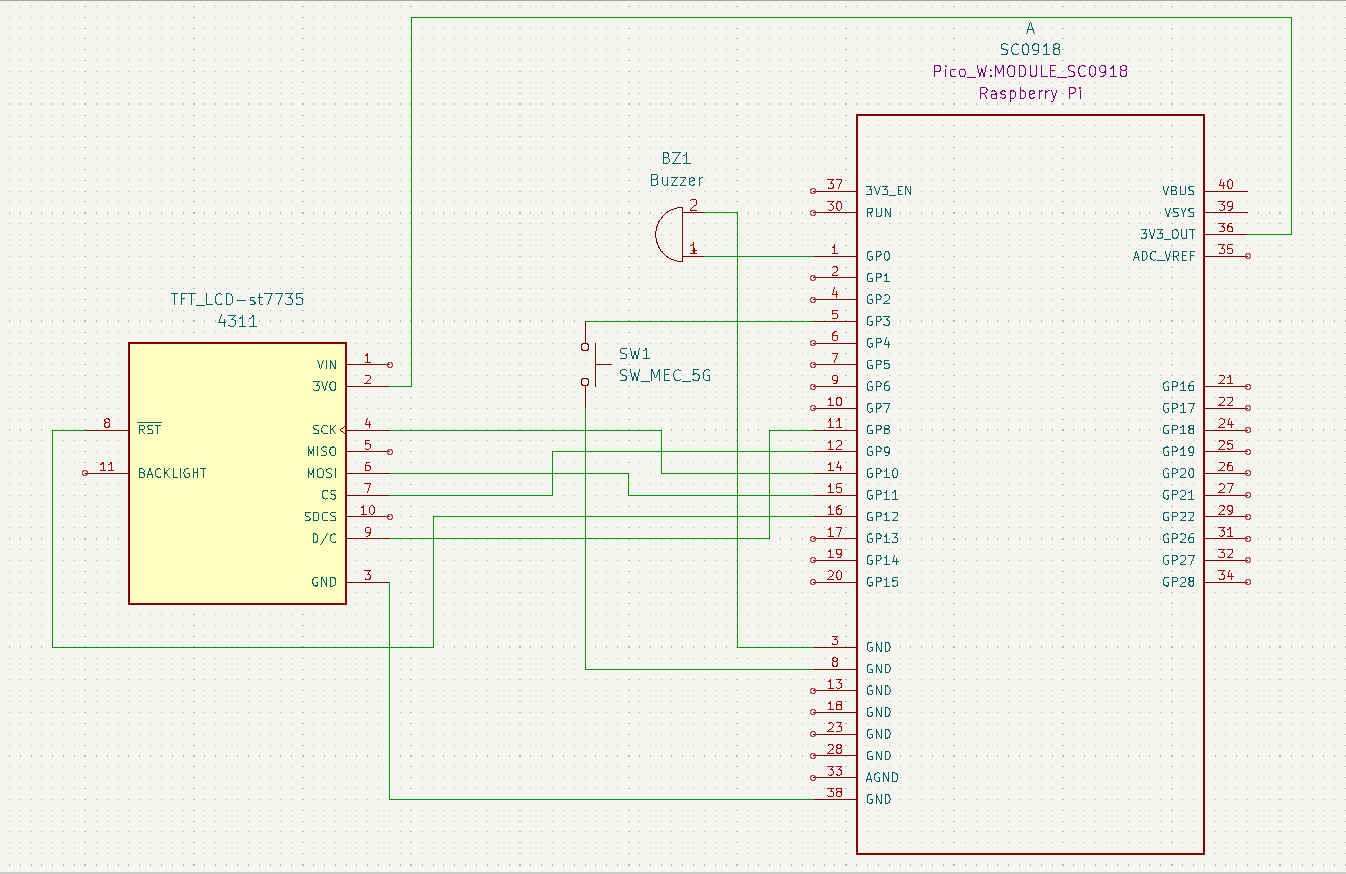Cryptocurrency price tracker
Rust-based cryptocurrency price tracker with alerts and web interface
Author: Gulida Roman
GitHub Project Link: https://github.com/UPB-FILS-MA/project-roman-gulida
Description
A cryptocurrency price tracker built with Rust on a Raspberry Pi Pico WH, featuring a screen for monitoring real-time prices and daily percentage changes. It has a switch button for toggling between different currencies and provides price alerts with a buzzer. The project also includes a web application for remote monitoring.
Motivation
I've been interested in cryptocurrencies for a long time and use price tracking apps regularly. I thought it would be awesome to build my own monitoring system with a microcontroller. This project lets me create a simple tracker with alerts for buying on desired price. Plus, it's a fun way to combine my passion for crypto with hardware and coding.
Architecture

-
Components
- Data Source: The primary source of cryptocurrency data is the CoinMarketCap API. This is where the application fetches real-time prices and daily percentage changes for various cryptocurrencies.
- Microcontroller: The Raspberry Pi Pico WH serves as the central processing unit, managing data retrieval, handling logic, and interfacing with other components.
- Display Screen: A ST7735 LCD screen connected to the Pico WH shows the cryptocurrency price and daily percentage change. This is the main visual output for the tracker.
- Price Alert Buzzer: A buzzer that emits an audible alert when a price threshold is reached. This is connected to the Pico WH and is activated based on predefined conditions.
- Switch for Currency Selection: A toggle switch that allows the user to toggle between different cryptocurrencies. This connects to the Pico WH and interacts with the display and data-fetching logic.
- Web Server and Web Page: A web server running on the Pico WH serves a simple web page. This web page allows remote monitoring of prices and setting of price alerts.
-
Connections and Flow
- The Pico W fetches data from the CoinMarketCap API at regular intervals, typically using HTTP requests. This data is processed to extract the relevant price and daily percentage change.
- The screen is updated with the latest data, displaying the current cryptocurrency price and daily change.
- The toggle switch allows users to select which cryptocurrency to track, changing the request to the CoinMarketCap API accordingly.
- The buzzer is triggered when price alerts are activated. The alert thresholds are set via the web page, which communicates with the Pico WH through the web server.
- The web server running on the Pico WH allows users to access the tracker remotely through a web page, providing a convenient interface for monitoring prices and configuring alerts.
Log
Week 6 - 12 May
I received the hardware package, verified its contents, and started assembling the components.
Week 7 - 19 May
I completed the hardware assembly. I finished the KiCad schematic and began developing the software. This involved work with LCD and creating structs CoinData and MarketData.
Week 20 - 26 May
I decided to change the API from CoinMarketCap to CoinGecko, which would be more comfortable and would not have limitations.
On a software part, I have implemented a switch button, buzzer, LCD initialization and established Wi-Fi connection on a raspberry pi. I have wrote code for fetching data about bitcoin and ethereum from CoinGecko and displaying on the screen, also if the switch button would be pressed, we would see a switch between displaying currency.
Hardware
In my project I used a 1.8-inch SPI LCD with the ST7735 controller (128 x 160 px) to display cryptocurrency prices and daily percentage changes. The central microcontroller is the Raspberry Pi Pico WH. I used a breadboard for prototyping, a 3V active buzzer for auditory price alerts, toggle switch for switching between currencies and jumper wires to connect everything.
- Display(data would be displayed in format "st7735 Pin -> Raspberry Pi Pin"):
- VCC -> 3V3(OUT), pin 36
- SCL -> GPIO 10, pin 14
- SDA -> GPIO 11, pin 15
- RES -> GPIO 12, pin 16
- DC -> GPIO 8, pin 11
- CS -> GPIO 9, pin 12
- GND -> pin 38
- BL -> None
- Buzzer. The buzzer is connected to the GPIO 0(pin 1) and ground(pin3).
- Push button. Pushbutton switch is connected to the GPIO 3(pin 5) and ground(pin 8).
Images of the physical hardware and connections:


Schematics

Bill of Materials
| Device | Usage | Price |
|---|---|---|
| Rapspberry Pi Pico WH | The microcontroller | 39 RON |
| LCD Display | Display price and daily change | 30 RON |
| Active Buzzer | Price alert | 1.5 RON |
| Breadboard | The physical base of the project | 10 RON |
| Jumper Wires | Connect components | 4 RON |
| Toggle Switch | Switch between cryptocurrencies | 0.5 RON |
Software
| Library | Description | Usage |
|---|---|---|
| embedded-hal | A Hardware Abstraction Layer (HAL) for embedded systems | Interaction with LCD using SPI |
| reqwless | HTTP Client | Retrieve cryptocurrency prices and other relevant data from a remote server |
| embassy-rs | Modern embedded framework, using Rust and async. | GPIO, PWM, Concurrency and Synchronization, Networking, Peripheral Interfaces |
| heapless | Heapless, static friendly data structures | Buffers for Network Data, collections to manage data |
| defmt | Efficient, deferred formatting for logging on embedded systems | Initialization and Setup Logs,Periodic Updates, Error Handling |
| serde | Serialization framework for Rust | Define Rust structs to match the JSON structure expected from the API responses |
| embedded-graphics | A no_std graphics library for embedded applications | Display data about crypto on LCD |